How 99-year old small family soap business Caurnie is scrubbing up for its digital future
When the pandemic hit, Caurnie Soaperie, a small business operating out of Kirkintilloch in Scotland, wasn’t prepared. With its traditional sales channels limited, it needed to move into the digital age – and fast. With help from a crack team of global marketing experts, Caurnie was presented with tools and strategies to give it a digital, packaging and e-commerce roadmap to its digital future – but was it enough to help Caurnie out of the soapy bubble?
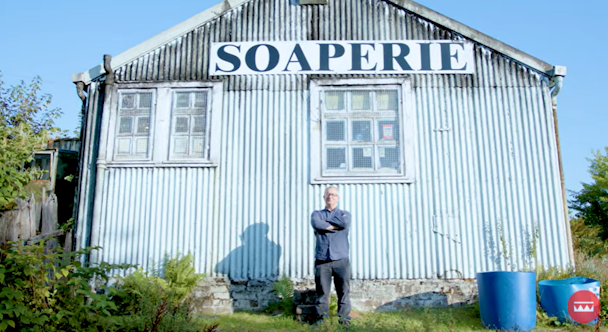
Jim Little, owner, Caurnie Soaperie
Caurnie Soaperie is a 99-year-old vegan soaperie known for making a variety of skincare and haircare products, ranging from bodywash and shampoo to conditioner and moisturizer. From its headquarters in Kirkintilloch, Scotland, the small family-owned business is unique in that it uses only locally grown or foraged plants to produce small batches of products using original antique equipment.
The company was established in 1922 and has a rich family legacy that has been carried on by the founder’s grandson, Jim Little, owner of Caurnie Soaperie. Historically, the brand has never had much competition to contend with, but with the soap market becoming more saturated, Little believes that “Caurnie has always been doing things that are well-thought-out and different.” He says: “I’ve found success in having something that’s a good design, not just a cut and paste of somebody else’s stuff plastered with my brand on it.”
With ambitions to become a globally-recognized brand, Little is fully aware that the current set-up of the business is a far cry from the frictionless experience that will help him reach this goal. The website, ease of packaging and fulfilment of customer orders are challenges that he needs to address.
“The website is one of my total weaknesses – it’s very hard to navigate and not the way I’d like to see it,” says Little. “The reason I haven’t been addressing these issues [is because] I’ve been approaching it in little bits rather than giving it proper attention. That’s why it’s all over the place. There’s loads of friction in the way I do business, it’s not smooth – and my aim is to be frictionless.”
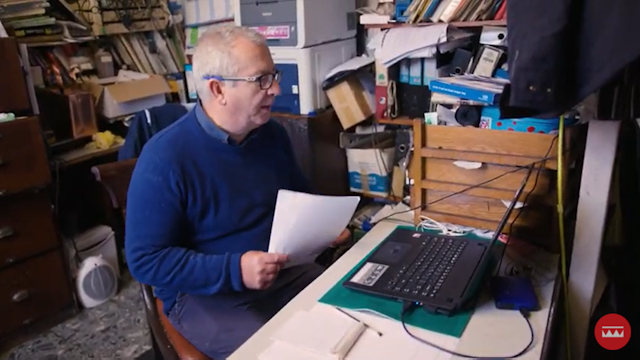
Pandemic problems
Before the pandemic, Caurnie relied solely on its basic website and having a physical presence at farmer’s markets to sell products. With pandemic lockdowns cutting off its main route to market, it needed to find new ways of doing business – it needed to go digital.
So, as part of The Drum’s ‘Marketing can change the world’ global initiative, Meta (Facebook) and a crack team of digital experts set out to transform Caurnie and equip the business with knowledge and access to digital tools that would help bring it into the modern age.
The team, led by Natasha Chetiyawardana, creative partner and founder, Bow & Arrow (part of Accenture Interactive), included: Shayne Cuffy, experience lead, VMLY&R – Healthcare & Pharmaceuticals; Mel Henson, head of business strategy and creative, OptimiZion; Stuart Gilmour, owner, Stand; Cassandra Stevens, global head of commerce, Publicis Commerce; Srija Chatterjee, global marketing director, Dole Sunshine Company; and Cameron Worth, chief creative officer, SharpEnd.
The goal for the team was ambitious: to develop world-class, yet practical, low-cost digital marketing initiatives to help the brand reduce friction and increase sales. Working together with Little, they embarked on a comprehensive review of the business and competitive environment, assessed the opportunities and challenges, and developed a marketing strategy for Caurnie.

“The main issue was that the way Jim had been doing business hadn’t really changed much since his grandfather’s time,” says OptimiZon’s Mel Henson. “He got a lot of sales through farmer’s markets so was very badly hit during Covid-19. That also meant that he’d never really invested much in his website – which had an old-fashioned design and broken links, among other things.”
To tackle these challenges, the team set about resolving these issues using classic marketing principles, as Henson explains: “It’s about looking at the key things – what’s really authentic and true about the brand – and putting it together in a structured way. We had to look at the proposition, what the key messages were for the consumer, who the consumer is, tone of voice and just be methodical in working through that. That’s where you get an answer that really resonates and meets the brief.”
Armed with new creative concepts, including a strapline, product packaging and pack copy, the team also created a social media plan, incorporating Facebook Shop and an Amazon listing concept.
Lacking style and substance
The problem with the Caurnie website in its basic form was that it was archaic and limiting in its ability to be a viable sales channel. It had no value proposition, and was using stock fonts and template, inconsistent product photography and big blocks of text – plus it was missing products on the homepage. It lacked trust and the benefits of the products were not clear. Poor site navigation further hindered the website user experience (UX), and the checkout page didn’t allow for international postage, further limiting the potential reach of the products.
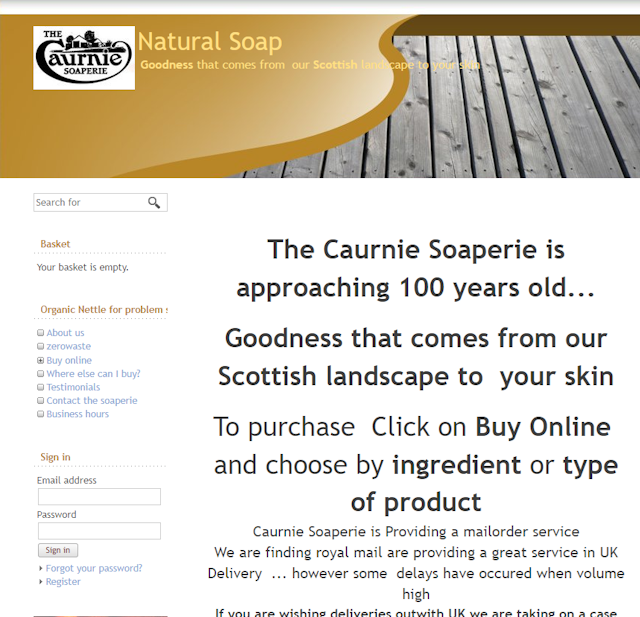
Caurnie’s target audience are affluent, socially-aware consumers, who love natural, organic, chemical-free products. Some might have dry or sensitive skin, while others may suffer from some skin ailment or onset of a skin ailment. Armed with these insights, the team devised a new proposition for the business: ‘Goodness that comes from our Scottish landscape to your skin.’
To align with Caurnie’s core values, the tonality and personality of the brand would be real, authentic, honest, simple, knowledgeable and Scottish. Born out of the strategy that the ingredients have ‘do-good’ properties, the creative expression and strapline became ‘Scottish goodness for your skin’. The ‘goodness’ not only implies therapeutic benefits without making claims, but is linked to Little’s own ethos and outlook on life, which is something unique to Caurnie.
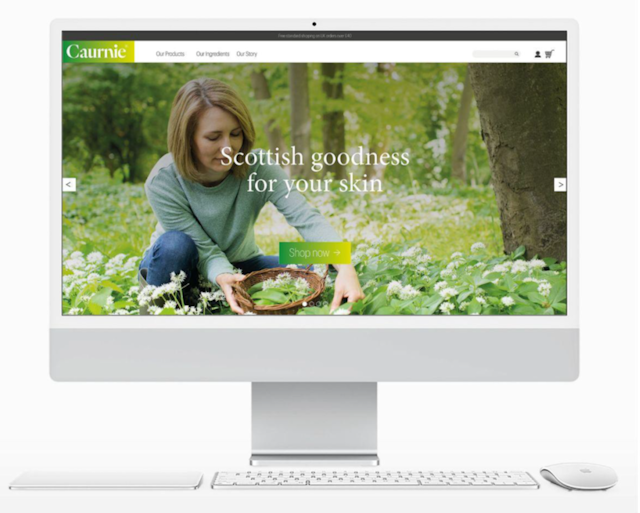
A brand evolution
Caurnie is a traditional brand steeped in almost 100 years of history with a loyal customer base – so putting the brand house in order came with its own set of challenges. To start with, the team had to be careful when evolving the brand, building on the history and heritage of Caurnie while also bringing it up to date. They settled on a crisp, clean contemporary serif font with bags of quirk and personality – just like the owner himself.
The newly-proposed logo was a bespoke adaptation that shortened the brand name to simply ‘Caurnie’ while subtly creating an underlying connection back to the business behind the brand. In addition, plans were put forward to transform the product packaging by using sustainable materials that were locally sourced, cost-effective and, where possible, recyclable and reusable.
“It was important to try and keep a bridge back to the original identity,” says Stand’s Stuart Gilmour. “Going back to basics, it was about making the packaging easy, pre-made and inexpensive, but stickered in a way that is very clean and clear. It was absolutely about consistency but with enough differentiation between the range of products.”
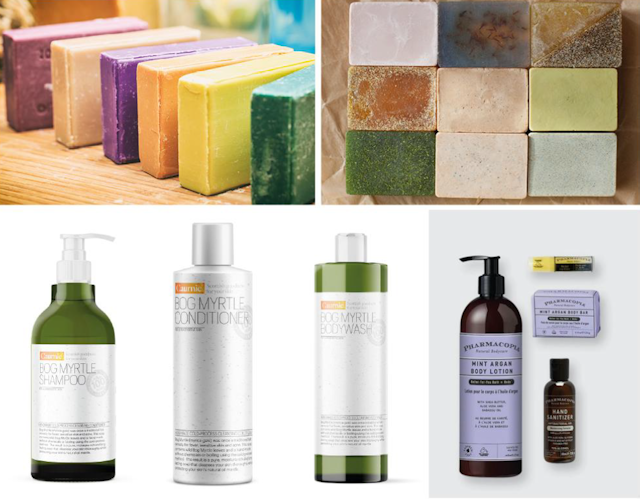
Connected packaging experience
To bring the brand to life in new and interesting ways, one of the most logical and immediate starting points was to think about Caurnie’s products as storytelling engines. As part of the brand overhaul, the team proposed turning bars of soap into digital storytellers by creating ‘The Caurnie Connected Experience.’ By implementing a Connected Experience into the product packaging, accessible via QR code, this would unlock a new, always-on media channel and provide a single point of engagement for Caurnie customers to re-purchase, learn more about the product range and access social media channels.
For the Connected Experience to be successful, it needs to be built on five pillars – to be useful, shoppable, beneficial, transparent and inclusive. Repeat business and customer loyalty is central to Caurnie’s business model, so rather than relying on the strength of the product alone, a Connected Experience would enable it to actively encourage and reward loyalty and repeat purchases.
“Caurnie’s story is one of its greatest strengths – the more this story can be learned and shared, the stronger it will resonate with consumers and the more invested in the company they will be,” says SharpEnd’s Cameron Worth. “By creating a Connected Experience we can help bring this story to life, making it easily accessible via a scan of a QR code. We can also link to more in-depth product information across the range, enabling greater discovery of the Caurnie product portfolio.”
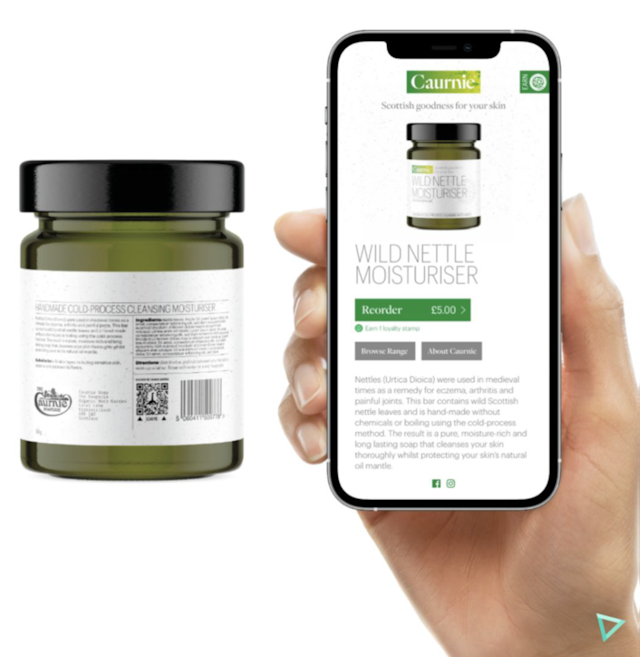
One shop, more ways to get discovered
With the suggested introduction of new e-commerce tools and platforms, the team proposed the creation of a Caurnie Facebook Shop to enable customers to browse and buy Caurnie products directly in the app or be redirected to the website’s checkout. One of the biggest benefits of this would be gaining insights and data on sales to enable easier manufacturing and fulfilment in the future.
To improve the customer service, the team also proposed a Facebook Messenger bot to act as a source of information using AI to provide answers to a series of predetermined questions.

There are lots of benefits to Little’s products, but without clear and consistent messaging, tone of voice and look and feel, the message was getting lost. The team deemed it important to ensure that ‘Scottish Goodness for your Skin’ was the touchstone for everything.
Armed with the new brand positioning, logo, strapline, product copy, packaging ideas, tone-of-voice guidelines and a Facebook Shop mockup, Little now has the tools and advice to take Caurnie forward into the digital age.
“I always think life is soup making and you’ve got to get the right elements to go into your soup,” says Little. “What [the experts have] given me is a kitchen full of elements and I just need to now start making soup, not soap ... but of course I’ll still make soap. I need to release some of the things I’ve been doing to let the professionals do that. There’s lots of other stuff we can develop and absorb. I wanted friction-free and this has given me the roadmap to get there.”
2022 marks the centenary of Caurnie Soaperie – the perfect time to launch the new brand. Will Little follow this advice? Stay tuned in the New Year when The Drum will be revisiting Caurnie Soaperie to find out how he got on with implementing the new proposed strategies.
You can catch up here on the four-part docuseries, which follows the digital transformation journeys of Caurnie Soaperie and Grand Tea & Imports in New York.

